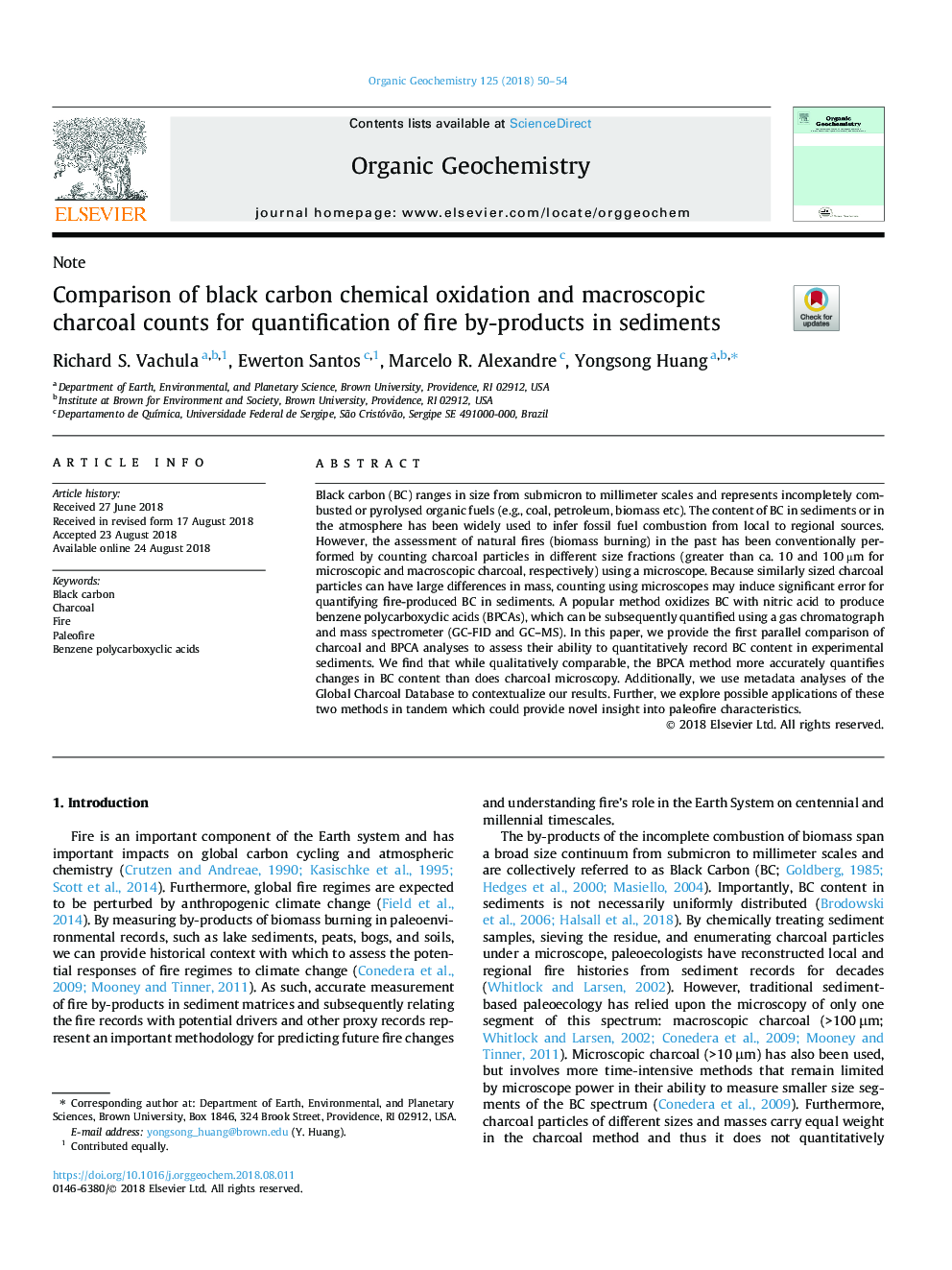| Article ID | Journal | Published Year | Pages | File Type |
|---|---|---|---|---|
| 10141351 | Organic Geochemistry | 2018 | 5 Pages |
Abstract
Black carbon (BC) ranges in size from submicron to millimeter scales and represents incompletely combusted or pyrolysed organic fuels (e.g., coal, petroleum, biomass etc). The content of BC in sediments or in the atmosphere has been widely used to infer fossil fuel combustion from local to regional sources. However, the assessment of natural fires (biomass burning) in the past has been conventionally performed by counting charcoal particles in different size fractions (greater than ca. 10 and 100â¯Âµm for microscopic and macroscopic charcoal, respectively) using a microscope. Because similarly sized charcoal particles can have large differences in mass, counting using microscopes may induce significant error for quantifying fire-produced BC in sediments. A popular method oxidizes BC with nitric acid to produce benzene polycarboxyclic acids (BPCAs), which can be subsequently quantified using a gas chromatograph and mass spectrometer (GC-FID and GC-MS). In this paper, we provide the first parallel comparison of charcoal and BPCA analyses to assess their ability to quantitatively record BC content in experimental sediments. We find that while qualitatively comparable, the BPCA method more accurately quantifies changes in BC content than does charcoal microscopy. Additionally, we use metadata analyses of the Global Charcoal Database to contextualize our results. Further, we explore possible applications of these two methods in tandem which could provide novel insight into paleofire characteristics.
Keywords
Related Topics
Physical Sciences and Engineering
Chemistry
Organic Chemistry
Authors
Richard S. Vachula, Ewerton Santos, Marcelo R. Alexandre, Yongsong Huang,
